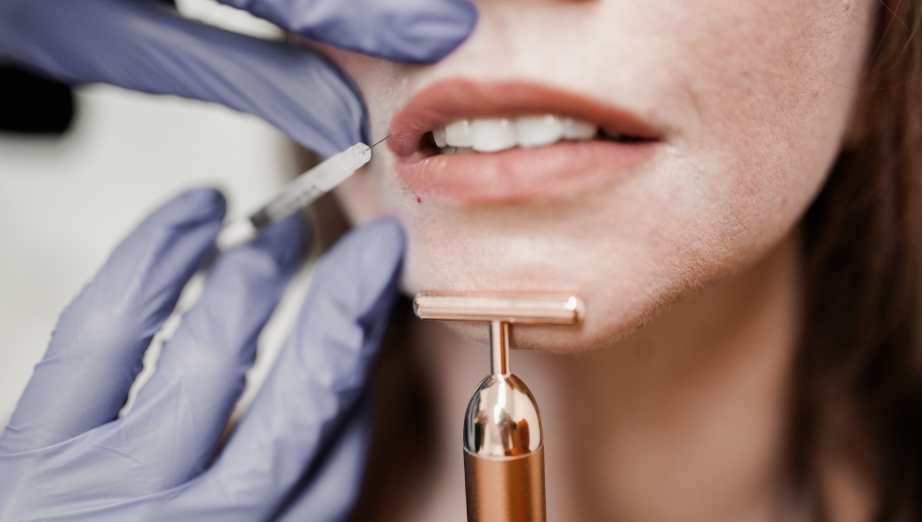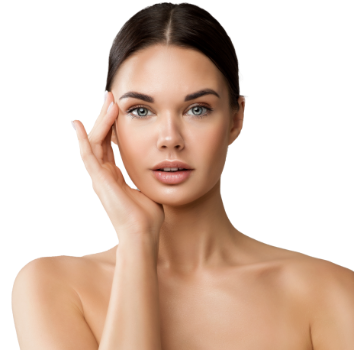Vertical lines around the mouth are a common facial feature that often become more noticeable over time. At Shellharbour Skin, our consultations are designed to help you understand the anatomical and biological reasons these lines form, and to discuss safe, evidence-based management pathways suited to your needs.
This consultation is educational in nature, it focuses on understanding causes, contributing factors, and safe approaches rather than promoting or implying cosmetic outcomes.
Understanding Why Vertical Lines Form
Vertical lines, sometimes referred to as perioral or upper-lip lines – are fine creases that can appear above or around the lips. They may be more visible in some individuals depending on genetics, lifestyle, and natural ageing patterns.
Factors that can contribute include:
Repetitive movement: Talking, smiling, and pursing the lips create repetitive folding of the skin.
Natural ageing: Collagen and elastin production decline over time, reducing the skin’s ability to rebound.
Sun exposure: Ultraviolet light accelerates collagen breakdown, contributing to skin texture changes.
Structural changes: Loss of support in surrounding tissues and volume redistribution can affect how light and shadow fall across the skin.
Lifestyle influences: Smoking, hydration, and nutrition impact the skin’s repair and resilience.
Understanding these mechanisms allows clinicians to discuss safe, anatomy-based options for managing visible changes in this area.

Your Consultation at Shellharbour Skin
A consultation for vertical lines focuses on education, assessment, and safety planning.
It provides an opportunity to discuss your concerns in a supportive, medically supervised setting.
During your appointment, your clinician will:
- Review your medical history, allergies, and any prior aesthetic procedures.
- Assess skin quality, elasticity, and surrounding structures of the perioral area.
- Explain how movement, environment, and biology interact to influence visible changes.
- Discuss management options that align with your health and expectations.
- Provide an opportunity to ask questions or raise any concerns before deciding on next steps.
No intervention is performed without confirmed suitability, informed consent, and a full medical assessment.
Clinical Discussion and Management Planning
Following your assessment, your clinician may outline management pathways or educational options suited to your individual needs.
These discussions are educational in nature and focus on helping you understand the unique anatomy of the perioral lines, as well as safe, evidence-based approaches that may support its structure and appearance over time.
Topics may include:
- Observation or monitoring: When no immediate intervention is required, periodic review may be recommended to assess gradual changes in skin and soft-tissue balance.
- Lifestyle and skin-care optimisation: Discussion of hydration, sun protection, sleep quality, and home-care routines that support the delicate skin beneath the eyes.
- Professional skin treatments: Exploration of gentle, non-invasive modalities such as Alma Hybrid, Microneedling, Laser Genesis, which may be discussed for supporting overall skin function and quality in suitable cases.
- Medically directed or prescribed approaches: Where clinically appropriate, your clinician may discuss non-surgical options performed under medical supervision that act beneath the skin’s surface to support structure and volume. These are only undertaken following an in-person medical assessment and cannot be named or advertised publicly under AHPRA and TGA regulations.
- Collaborative or referred care: If multidisciplinary review (for example, ophthalmology, dermatology, or allied health input) would benefit your overall plan, your clinician may recommend collaborative management.
Aftercare and Follow-Up
If a management pathway is pursued, temporary effects such as mild swelling or redness may occur.
Your clinician will provide a personalised aftercare plan, which may include:
- Avoiding makeup and active skincare for 24–48 hours.
- Avoiding direct sun, heat, and strenuous exercise.
- Refraining from touching or massaging the treated area.
- Sleeping with your head elevated to reduce swelling.
- Attending review appointments if recommended.
Written instructions and contact details will be provided after your consultation.
Risks and Considerations
All aesthetic or medical interventions carry risks.
Your clinician will discuss these with you and explain the precautions taken to reduce them.
Possible temporary effects:
- Redness, swelling, or bruising
- Mild tenderness or irritation
- Temporary unevenness or firmness
Less common or serious risks:
- Prolonged inflammation or discolouration
- Infection or delayed healing
- Allergic or inflammatory response
- Vascular compromise, a rare but serious event that may affect tissue health or, in exceptional cases, vision
Seek immediate medical review if you experience persistent pain, skin colour changes, or visual symptoms following any procedure.
Cost and Planning
Consultation costs vary depending on the complexity of your concerns. All fees are confirmed prior to your appointment. If a management pathway is discussed, it will be outlined separately following your assessment. No procedure occurs without a full explanation, consent, and documentation.
Important Information
- Shellharbour Skin provides consultations for assessment and management planning only.
- We do not advertise or promote prescription-only medicines, in compliance with AHPRA and TGA guidelines.
- All discussions occur under medical supervision and follow an informed-consent process.
- Individual experiences and suitability vary.
- Consultations are available to adults aged 18 years and over.
- This information is provided for educational and transparency purposes only and should not replace individual medical advice.
Practitioner Transparency
Consultations and skin treatments at Shellharbour Skin are provided by a multidisciplinary clinical team:
Dermal Clinicians – qualified skin professionals who are not registered under AHPRA but hold tertiary qualifications in dermal science or dermal therapies. They provide skin treatments and consultations within their professional scope and under clinical supervision.
Registered Nurses – AHPRA-registered health practitioners who perform skin and aesthetic treatments within their clinical training and scope of practice.
Medical Practitioners – AHPRA-registered doctors experienced in skin health and aesthetic medicine who oversee and support all clinical services.
All treatments are undertaken within a medically supervised environment, ensuring that each patient pathway is reviewed for clinical suitability, safety, and evidence-based care.
You can verify registration for medical practitioners and nurses at ahpra.gov.au
Frequently Asked Questions
Why do these lines become more noticeable with age?
Over time, collagen and elastin production decrease, leading to less skin elasticity. Everyday actions such as talking, smiling, or drinking through a straw fold the skin in similar patterns, and these folds eventually form fine lines. External factors like UV exposure, dehydration, and smoking further accelerate this process by breaking down the skin’s structural proteins.
Are the treatments for perioral lines permanent?
No. Skin health is dynamic and influenced by ageing, environment, and lifestyle. Management strategies aim to support natural function and improve resilience over time. Your clinician will discuss realistic timeframes and maintenance strategies tailored to you.
Do you use prescription-only medicines for perioral lines?
Prescription-only medicines may sometimes be discussed for this area but are not advertised or promoted. They are only considered after medical assessment and under supervision by a qualified prescriber, in line with AHPRA and TGA advertising regulations. Your clinician will provide factual information about their mechanism, safety profile, and suitability during your consultation.
Is this consultation suitable for everyone?
Suitability depends on factors such as your medical history, skin type, and treatment goals.
Some individuals may benefit from education and home-care guidance alone, while others may explore clinical management under medical supervision. Consultations are available to adults aged 18 years and over.
If you have a question, get in touch and one of our staff will be in touch shortly.




